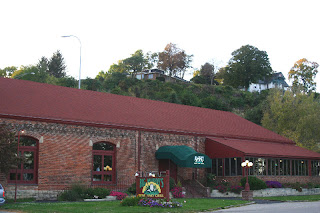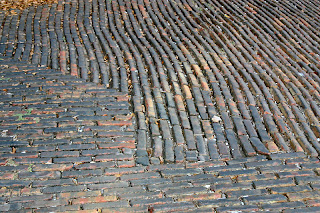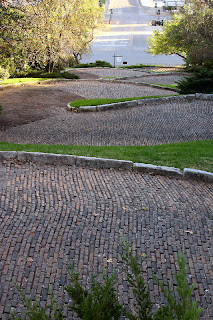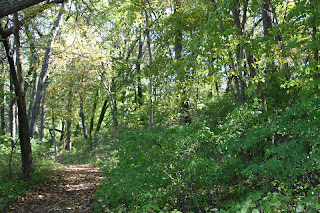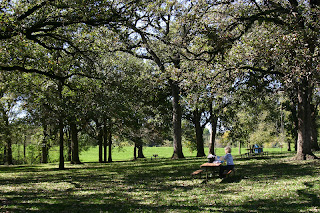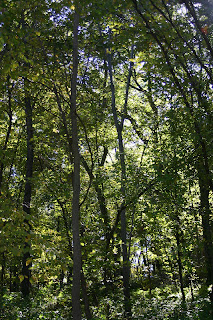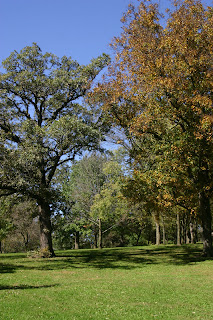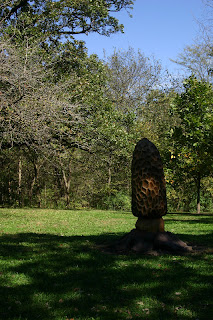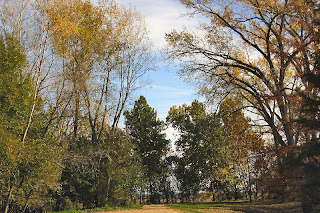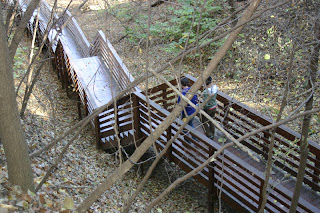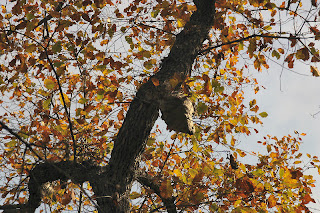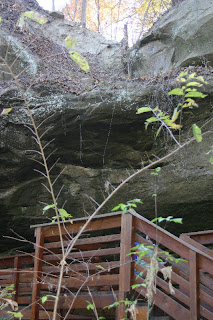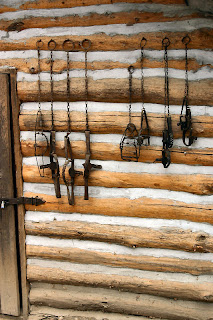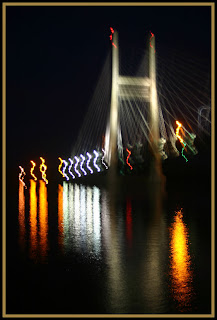 I had to make just one more post before leaving this charming city. The city of Burlington is both a “National Trust for Historic Preservation” town, but also a recipient of the “Great American Main Street” Award too. They even had this beautiful bridge called the Great River Bridge on U.S. Highway 34 that went directly over the Mississippi River and right into the city of Gulfport, Illinois. We did not do this drive that day, but we did do it the next day as we drove over the Mississippi and on down through Southern Illinois.
I had to make just one more post before leaving this charming city. The city of Burlington is both a “National Trust for Historic Preservation” town, but also a recipient of the “Great American Main Street” Award too. They even had this beautiful bridge called the Great River Bridge on U.S. Highway 34 that went directly over the Mississippi River and right into the city of Gulfport, Illinois. We did not do this drive that day, but we did do it the next day as we drove over the Mississippi and on down through Southern Illinois.After we had our fun on the "Snake Alley" road trip we went down and checked out the river front area and got some directions for finding a place to have diner. When we asked to locals what we should see while we were in their lovely little town, that answer was always the same; “Have you seen Snake Alley?” So I would say that in spite of it NOT being the most publicized crookedest street in the world, it is still the # 1 tourist activity in Burlington, Iowa.
One thing that no one pointed out was this once beautiful church, that back in April 2007 was destroyed by fire. Newpaper reports said; "The First Methodist Church at 421 Washington Street in Burlington was destroyed by fire early this morning. Burlington and West Burlington Fire Departments were called to fight the blaze."
Burlington Fire Marshal, Mark Crooks said, “Per-Mar Security notified the Burlington dispatch center at 2:41 this morning of an automatic fire alarm going off inside the First United Methodist Church.” “Firefighters arrived about 4-minutes later and they found heavy fire in basement and on the first floor on the north side." “Master streams were set up right away and there are still some hotspots in there right now.”
“The State Fire Marshal’s office has been notified as well as the BATF from the federal government and they’re on the way down here right now. We’ll be making a determination about where we go from here." “It’s definitely suspicious at this point in time and we’re going to be continuing our investigation.”
The only fortunate part was that no one was hurt. But all I could see was the terrible damage that was done to this once glorious building. I tried to find out about the history of the building but was not really able to find out too much about it.
I did find out a little more about the city of Burlington though. It is the county seat of Des Moines County, Iowa. Burlington is the center of a micropolitan area including West Burlington and Middletown, Iowa and Gulf Port, Illinois. And that it has been called the Backhoe Capital of the World. (Whatever in the world that means)? My guess... that must be a farm tool that is made around here somewhere?
Later that day, (from a local's suggestion) we had dinner in a place called Big Muddy’s on the Mississippi. This was right in downtown Burlington on Front Street on the shores of the Mississippi. Additionally from our table, the place had a really great view of the pretty Great River Bridge. The view of the bridge from our vantage point in Big Muddy's, was much the same as this shot I took on the left. I personally thought the bridge looked much better lit up at night, than it did in the sunlight. But I also have another picture of the bridge from the other side in the daylight down below.
Big Muddy’s was actually an adaptive reuse of the old 1898 Burlington, Cedar Rapids and Northern Railroad freight house, which was turned into a restaurant and bar complete with a dock for boaters and parking for cars. When we got there, the place was very noisy and busy, but by the time we had completed dinner, the place had slowed down its business and gave us a chance to just relax for the evening before making out way back to our hotel.
Even though the first picture on the bottom doesn't do much to really sho the character of the place, we really did enjoy our dinner there with our view of the bridge. As we sat there having dinner, I also thought of the Golden Gate Bridge back in San Francisco compared to the Great River Bridge and the Lombard Street expirence compared to the Snake Alley expirence and Lombard Street and I could not help but see similarities between both bridges and between both the street and the alley. Starkly differnt but yet both quite unique.
One of the things I got a kick out of at Big Muddy’s was where they had painted high water lines inside the place that mark the last big flood where the banks of the Mississippi had overflowed into the building. All I could think off when I saw those was, I am sure glad we weren’t here “THAT NIGHT!” Timing is everything!
"The Mississippi River will always have its own way; no engineering skill can persuade it to do otherwise..." ~ Mark Twain in Eruption
